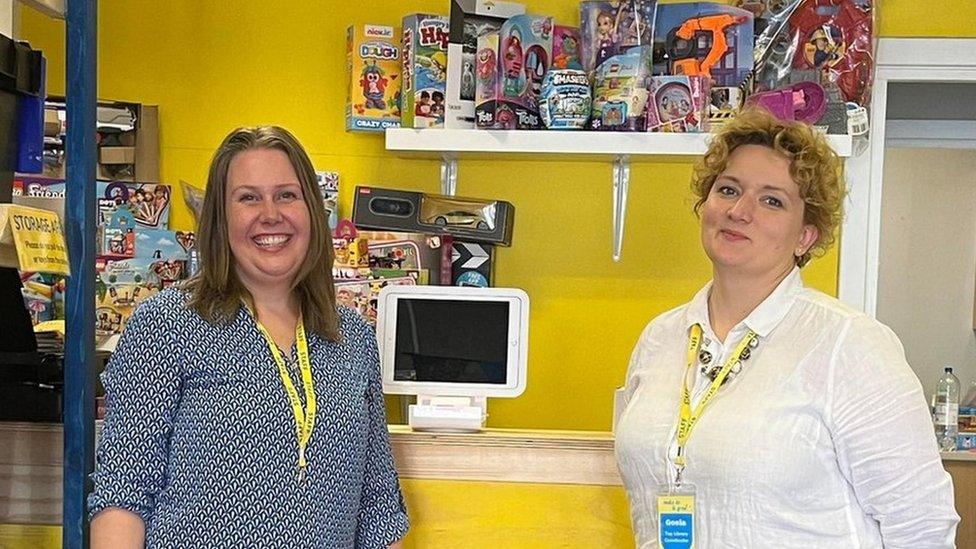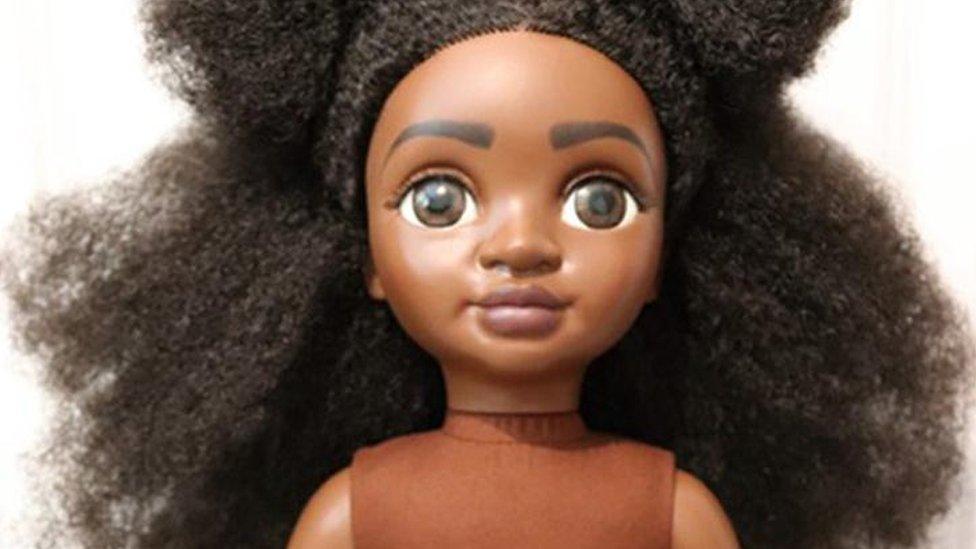Cost of living creates upheaval in Christmas toy shopping habits
- Published
- comments

Melissa Symonds says the timing of Christmas Day is good for retailers
Children's pester power is losing some of its impact in the run-up to Christmas owing to the soaring cost of living, an expert has said.
Melissa Symonds, UK director of toy analysts NPD, said parents were changing their shopping habits, ruling out some low-cost impulse purchases.
She said the "sweet spot" for retailers was toys priced from £20 to £50 that would last beyond the festive season.
Forecasts suggest toy sales are unlikely to rise this year.
The value of sales in the UK toys market in the first nine months of the year is down 5% compared with the same period last year, NPD analysis suggests.
"Parents are being stronger with pester power and saying 'no' at low price points, but they are not over-indulging at the highest prices either," Ms Symonds said.
She said that families were moving to the "middle-ground", even though £100 is typically spent on toys for children aged up to 10 at Christmas.
Despite the predictions of stagnant or falling sales, retailers will be hopeful that the timing of Christmas Day boosts sales. It falls on a Sunday, giving them a full shopping week in advance - which was a bumper week the last time it happened in 2016.

Aimee Hill says the list was drawn up with the cost of living in mind
The UK toy industry is still the second largest in Europe and the fifth biggest in the world.
As it unveiled its top 12 "dream toys" for Christmas, external, the Toy Retailers Association said it was conscious of the financial pressure facing families. However, people did still tend to prioritise spending on children for birthdays and Christmas, so toys at a range of prices were chosen.
"Kids are lucky enough to be put first," said Aimee Hill, a toy selector representing the association. "Half of the list of 12 is below £30 which is quite reasonable.
"People want fun this year more than ever because they are facing some real challenges."

The average price of the dozen highlighted toys - which include a fluffy guinea pig that gives birth to three pups - is just under £35. That is only £1 lower than the average last year, but nearly £10 cheaper than two years ago.
Across the market, the average cost of a toy is less than £10 during the year, and £13 at Christmas.
Ms Hill said that higher costs were not being passed on by the toy industry in the same way they had for groceries - a point reflected in official inflation figures, external.
'Dreading' Christmas
Among those fearing the financial pressure of the festive season is Kerry, who is unable to work while awaiting surgery.
"My Christmas Day will be filled with guilt," the 47-year-old told the BBC. "I am absolutely dreading it."
"I am looking out for the cheap options for everything. I can't afford to get my youngest daughter a main present, so it will be bits I can scrape together.
"I never spoilt her, but it would be nice not to have to worry about things so much."
She said she was suggesting to relatives that they buy her daughter toiletries and practical items as presents.
"It is upsetting. You would want to get her a treat, not just something we use everyday," she said.
Barnardo's, the children's charity, said its survey work suggested about half of parents with children aged under 18 were expecting to spend less on presents and food and drink compared with previous years.
The financial company, Barclaycard forecast a "restrained approach to festivities" among consumers this year. This would include more buying of secondhand gifts and families setting spending limits to manage their costs, it said.


Related topics
- Attribution
- Published3 July 2022

- Published31 October 2022

- Published4 November 2022
